Spain's coastlines present a wide variety of beaches, from the white sand shores of the Balearic Islands to the rocky coves of Cantabria along the Atlantic. This collection includes beaches such as Playa de Rodas in the Cíes Islands, the urban beach of La Concha in San Sebastián, and the secluded coves of Formentera including Ses Illetes and Cala Saona. In Andalusia, beaches like Playa de Bolonia near Tarifa feature Roman ruins nearby, while the volcanic landscapes of Cabo de Gata showcase Los Genoveses and Playa de Monsul. The Asturian coast displays natural formations such as Gulpiyuri, a beach enclosed within cliffs, and Playa del Silencio. The Canary Islands offer diverse beach types, from the golden sands of Las Teresitas in Tenerife to the expansive shores of Sotavento in Fuerteventura. This selection documents the geographic and geological range of Spanish beaches and provides practical information about location, access, and local features of each site.

Îles Cíes, Spain
Playa de RodasThis Playa de Rodas beach extends for 1200 meters (about 3940 feet) between two islands of the Cíes archipelago, connecting them through a natural sand strip. The fine white sand and clear waters of the bay attract visitors who come to swim and walk along this section of the Atlantic Islands National Park. The position between the two island bodies shelters the bay from strong waves, creating calm bathing conditions. Access is by ferry from the mainland, as the islands are open to the public only during summer months with limited visitor numbers.
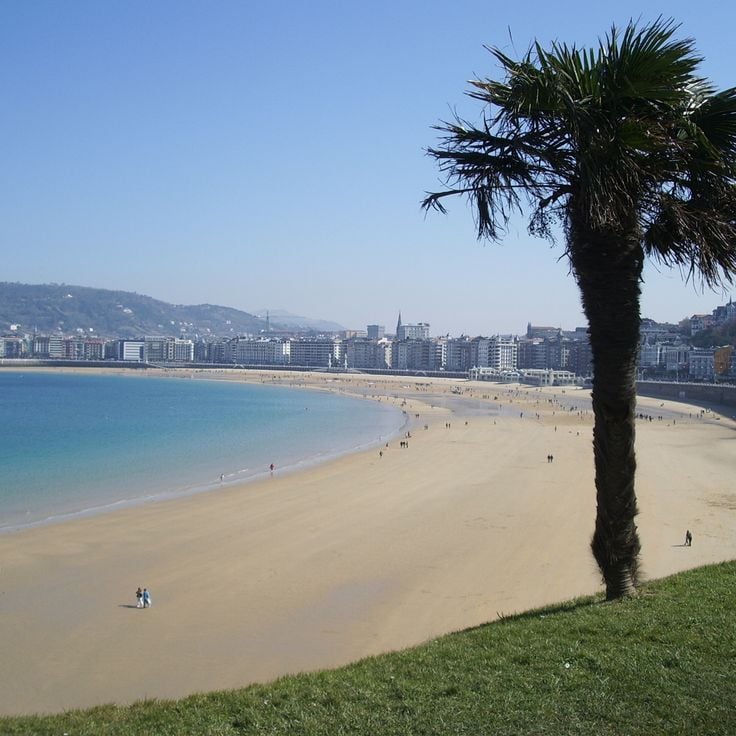
San Sebastián, Spain
La Concha BeachLa Concha beach extends for 1350 meters (4430 feet) along a shell-shaped bay in San Sebastián. This beach features fine sand and moderate waves, making it a popular bathing spot in the Basque Country. The protected location of the bay provides calmer water conditions than many other Atlantic coastal sections. The beach is lined by a promenade and sits centrally in the city, making it easily accessible.

Formentera, Spain
Playa de Ses IlletesPlaya de Ses Illetes stretches for 1,475 feet (450 meters) along the coast of Formentera and features shallow waters that extend far from shore. The beach consists of finely ground shell fragments rather than conventional sand, giving it a distinctive texture. These characteristics make the beach one of the notable examples of white sand beaches and turquoise waters that this collection of Spanish coastal areas presents, from the coves of the Balearic Islands to the Atlantic coasts of Cantabria.

Tarifa, Spain
Playa de BoloniaPlaya de Bolonia stretches for 12,500 feet (3,800 meters) along the coast near Tarifa and features a 98-foot (30-meter) sand dune, one of the tallest natural sand formations in Andalusia. This beach contains the archaeological remains of Baelo Claudia, a Roman city from the 2nd century BC that served as a fish processing center and trading port. The ruins include a theater, temples, a forum, and remnants of garum factories where the fermented fish sauce was produced. The beach consists of fine golden sand and sits between the Strait of Gibraltar and the Atlantic Ocean, where strong winds regularly blow.
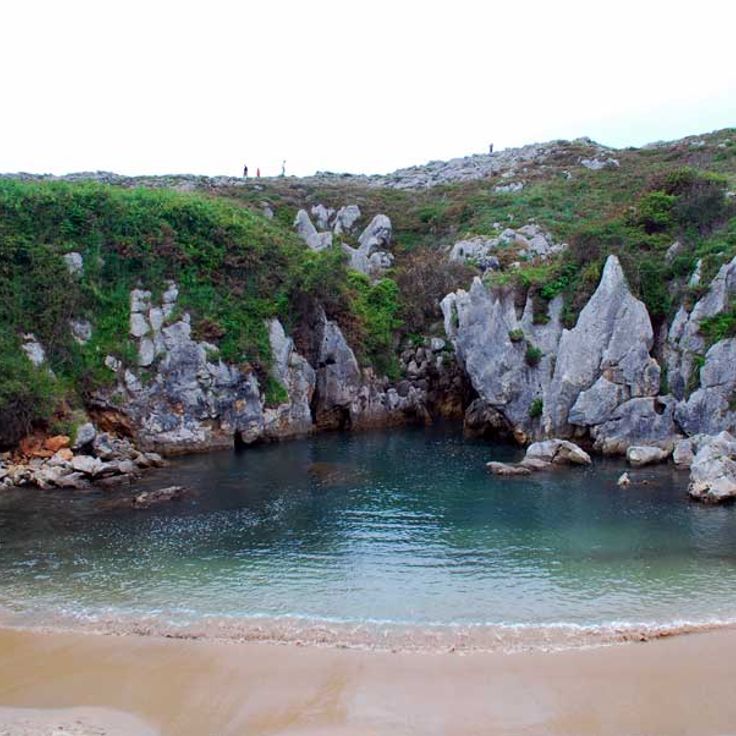
Llanes, Spain
Playa de GulpiyuriThis natural beach lies 100 yards (91 meters) inland from the coast of Asturias. Playa de Gulpiyuri is a small seawater basin connected to the Cantabrian Sea through underground tunnels. Water flows in through limestone rock fissures during high tide, forming a sand beach roughly 130 feet (40 meters) across. The beach is surrounded by green meadows and accessible via a walking path.
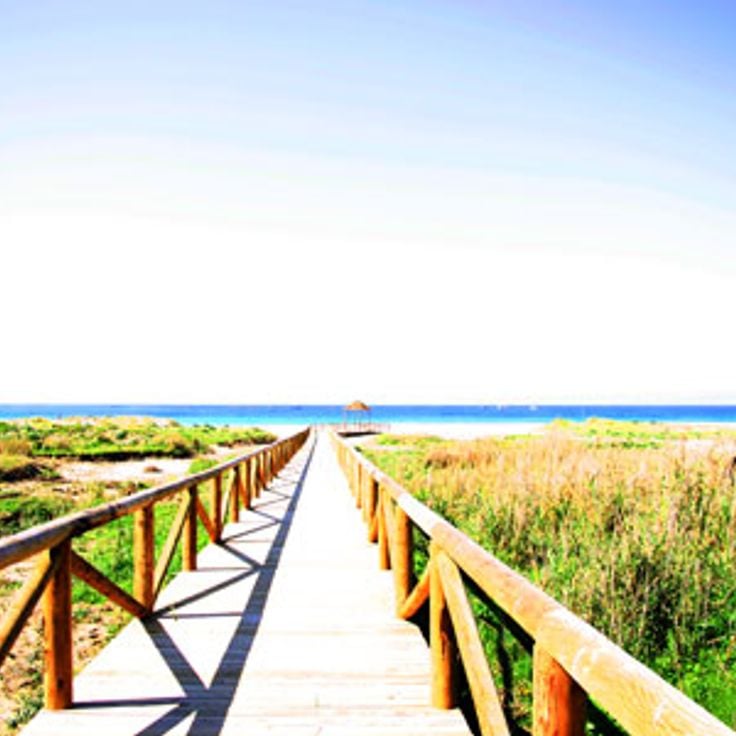
Zahara de los Atunes, Spain
Playa de ZaharaThe Playa de Zahara stretches for 5 miles (8 kilometers) along the coast of Zahara de los Atunes in the province of Cádiz. This beach features white sand and is bordered by dunes and Mediterranean vegetation. The Playa de Zahara provides direct access to the Atlantic Ocean and is located near the historic fishing village of Zahara de los Atunes. The beach forms part of the Costa de la Luz and is characterized by its natural surroundings.
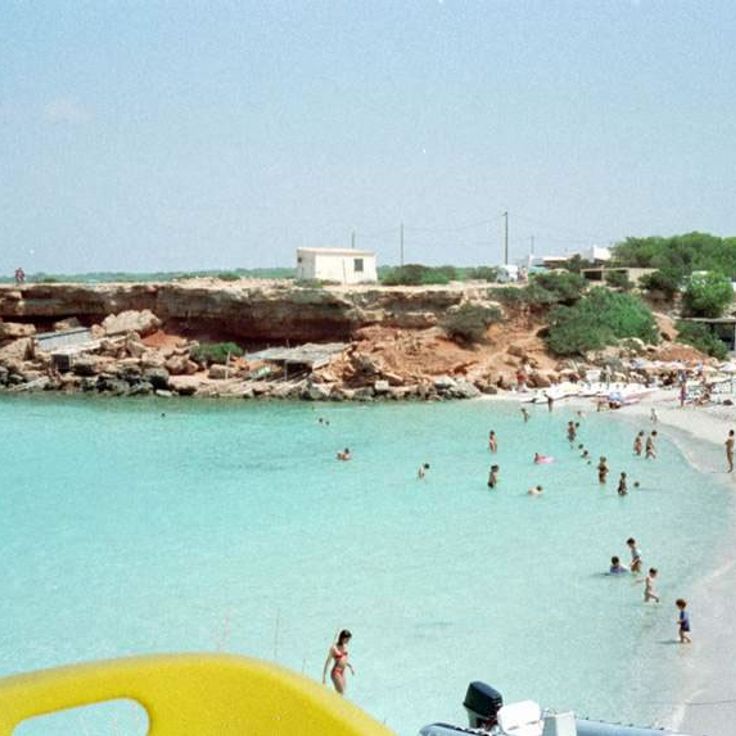
Formentera, Spain
Cala SaonaCala Saona is a 460-foot (140-meter) bay on the west coast of Formentera, characterized by red sandstone formations and transparent waters. The bay is surrounded by pine forests that extend to the shoreline. The red sandstone creates a contrast with the turquoise Mediterranean waters. The beach provides direct access to the water and sits in a sheltered location. The vegetation consists primarily of Mediterranean pines that offer natural shade.
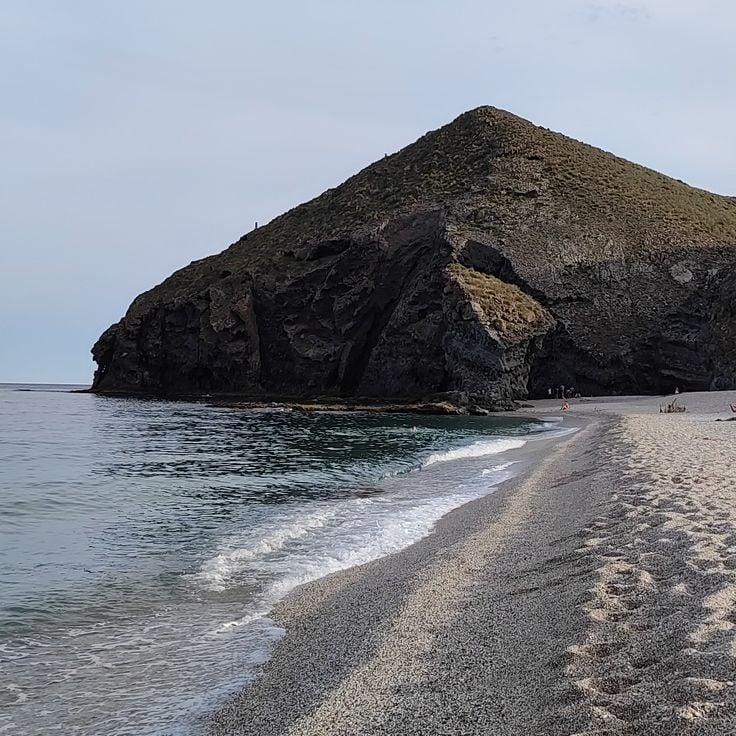
Carboneras, Spain
Playa de los MuertosPlaya de los Muertos stretches 0.75 miles (1.2 kilometers) along the coast of Carboneras within the Cabo de Gata Natural Park. The beach features white pebbles and clear blue waters. The geological formations of the park provide the backdrop for this coastal area, which maintains natural characteristics due to its location in a protected zone. Access is via a path leading down from the parking area. The water is suitable for swimming and snorkeling, though visitors should note the pebbly nature of the shoreline.
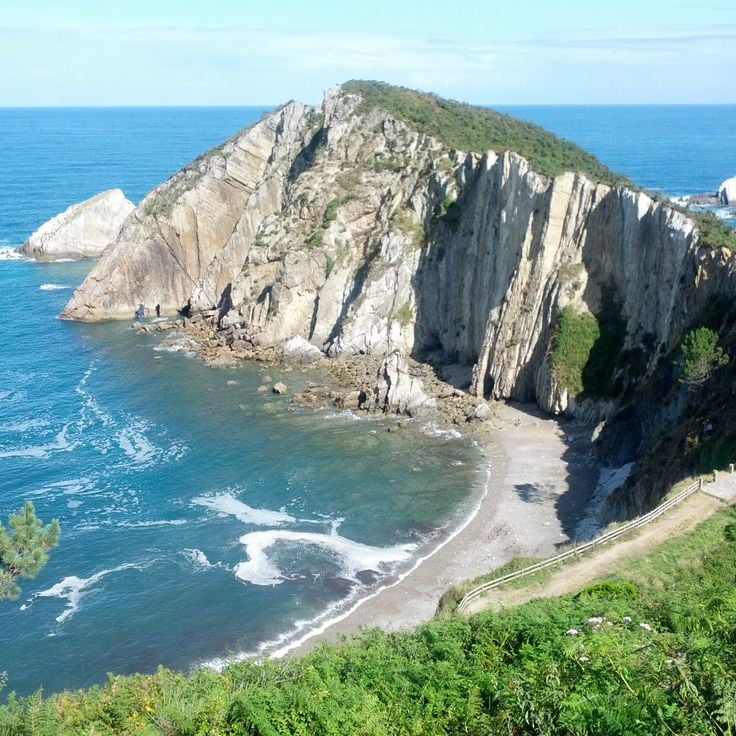
Cudillero, Spain
Playa del SilencioThis bay sits between rocks and offers clear water. Playa del Silencio is accessible via a stone staircase from the parking area. The beach consists of sand and pebbles and is framed by tall cliffs that protect it from wind. The surrounding area shows the typical coastal landscape of the Cantabrian region with green slopes and rugged rock formations.
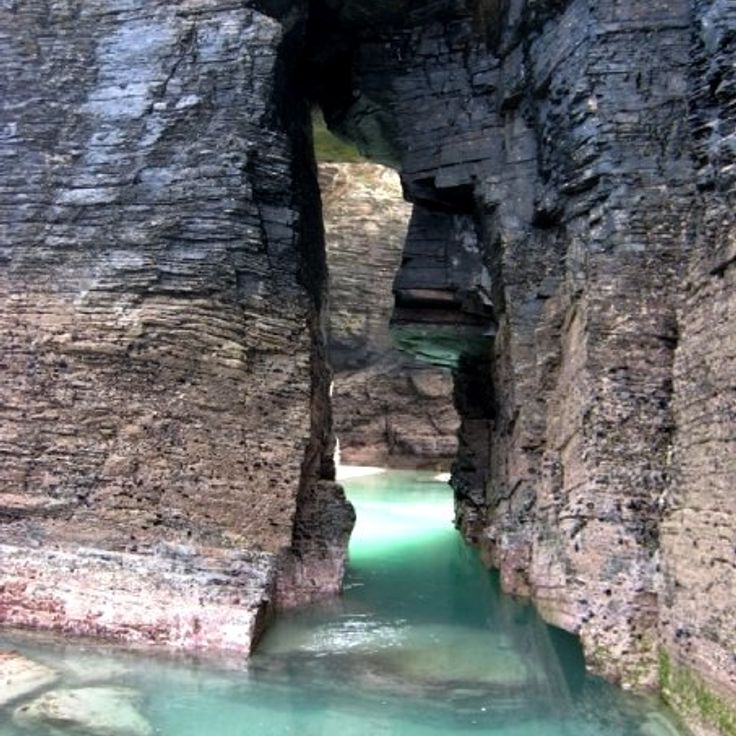
Ribadeo, Spain
Playa Las CatedralesPlaya Las Catedrales features tall stone arches and caves accessible at low tide. These geological formations of sedimentary rock have been shaped by erosion, creating a series of natural arches along the coastline. The beach is located on the Cantabrian coast in northern Spain, where tidal patterns dictate access to the rock formations. During high season, reservations are required to control visitor numbers and protect the natural environment.
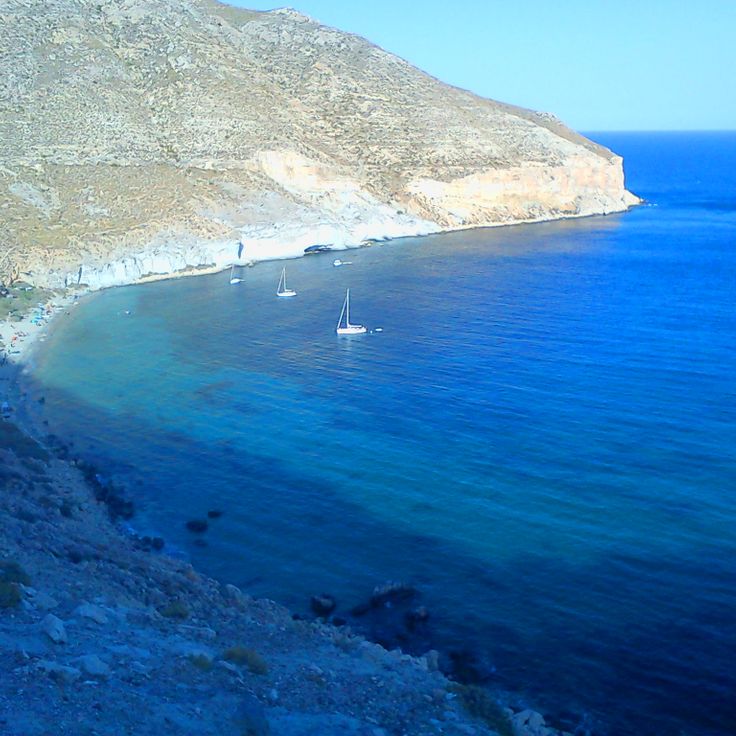
Almería, Spain
Cala de San PedroCala de San Pedro is a bay accessible only on foot or by boat along the Almería coastline. The clear waters of this secluded bay and the surrounding coastal landscape attract visitors seeking quieter stretches of beach. Above the bay stands a historic 16th-century defensive fortification that once served to protect against pirate attacks. Access is via a hiking trail of approximately one hour or from the sea. The bay features a mix of fine material and pebbles rather than uniform sand. Volcanic rock walls frame Cala de San Pedro, giving the bay its sheltered character and natural enclosure from the surrounding terrain.
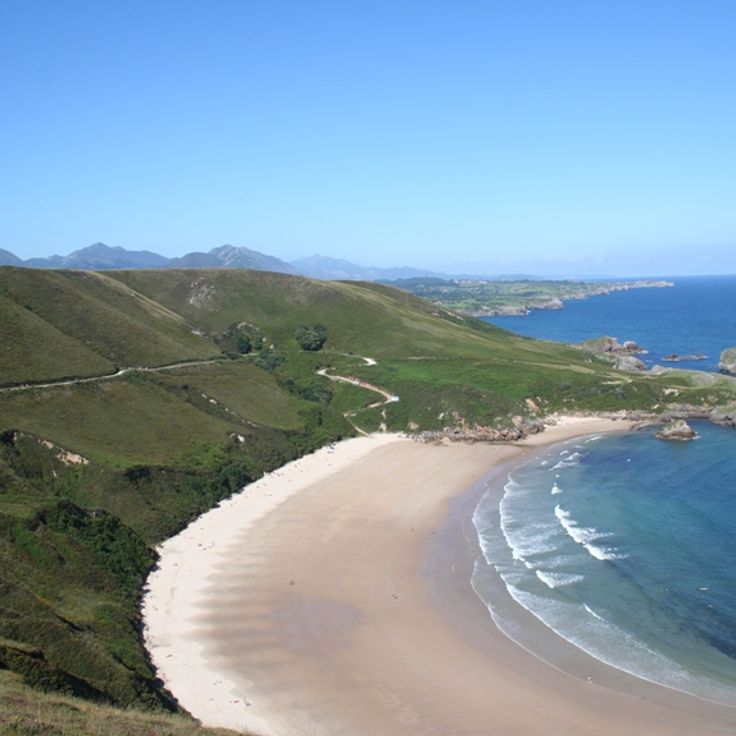
Asturias, Spain
Playa de TorimbiaPlaya de Torimbia is a 1,640-foot (500-meter) crescent-shaped beach along the Asturian coast. This beach attracts naturism enthusiasts and offers suitable conditions for surfing. The natural setting and sheltered location make it a popular destination on the Cantabrian coast.

Lanzarote, Spain
Playa del PapagayoThis bay on Lanzarote is located away from hotel zones and offers clear water with numerous fish for snorkeling. Playa del Papagayo is sheltered by rocky cliffs and features fine golden sand. Access is via unpaved roads or on foot, with the remoteness contributing to the natural setting. The calm water makes it suitable for swimming, and underwater visibility allows observation of marine life along the rock formations.

Menorca, Spain
Cala MacarellaThis cove on Menorca features fine white sand and turquoise Mediterranean waters between two limestone cliffs. Cala Macarella sits on the southern coast of the island and is surrounded by pine forests. The sheltered basin allows for calm swimming, while the surrounding cliffs provide natural shade. A coastal path connects the cove to the smaller neighboring cove of Cala Macarelleta. Access is via an unpaved road or on foot from the Cala Galdana development.

Almería, Spain
Playa de Los GenovesesPlaya de Los Genoveses extends for 1200 meters (three-quarters of a mile) within Cabo de Gata Natural Park and is surrounded by volcanic rock formations and Mediterranean vegetation. The light-colored sand and clear water of this bay contrast with the arid landscape of the region. As part of a protected area, this coastal stretch provides access to hiking trails through the surrounding hills and allows observation of local flora and fauna. Playa de Los Genoveses is reached via unpaved roads and has limited infrastructure.
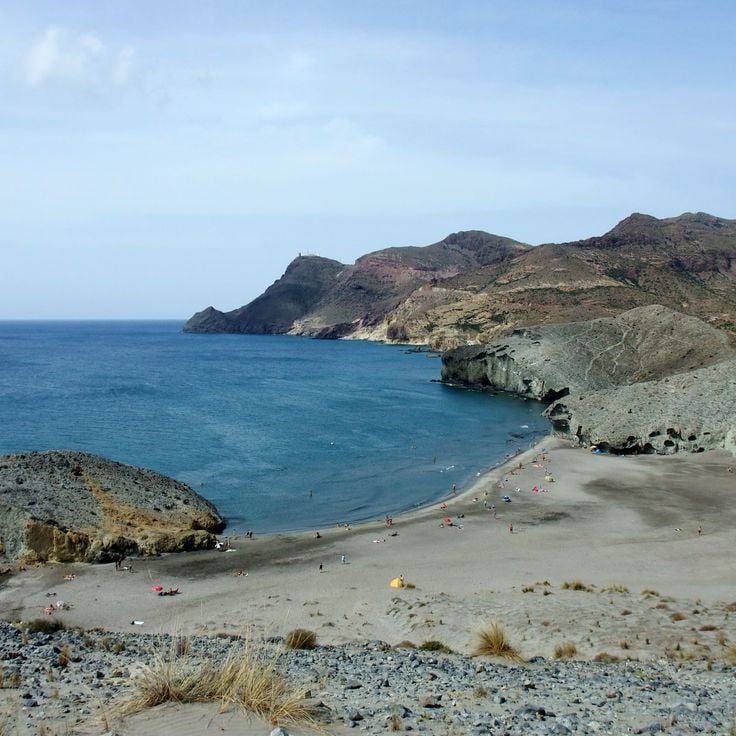
Almería, Spain
Playa de MonsulThis 300-meter (985 feet) Playa de Monsul features large volcanic rocks and fine sand. The beach sits within Cabo de Gata Natural Park and offers a coastal landscape shaped by black volcanic stone. The calm waters and natural surroundings make this beach an example of the geological formations found in the Almería region.

San José, Spain
Playa de la CalitaThis 200-foot (200-meter) sandy cove sits between tall limestone cliffs and provides access to the Mediterranean Sea. The beach is located near San José in Cabo de Gato-Níjar Natural Park and features fine sand and clear water. The steep rock walls shelter the cove from wind and create a calm swimming area. Access is via a footpath along the coast, and the cove has basic facilities during summer months.
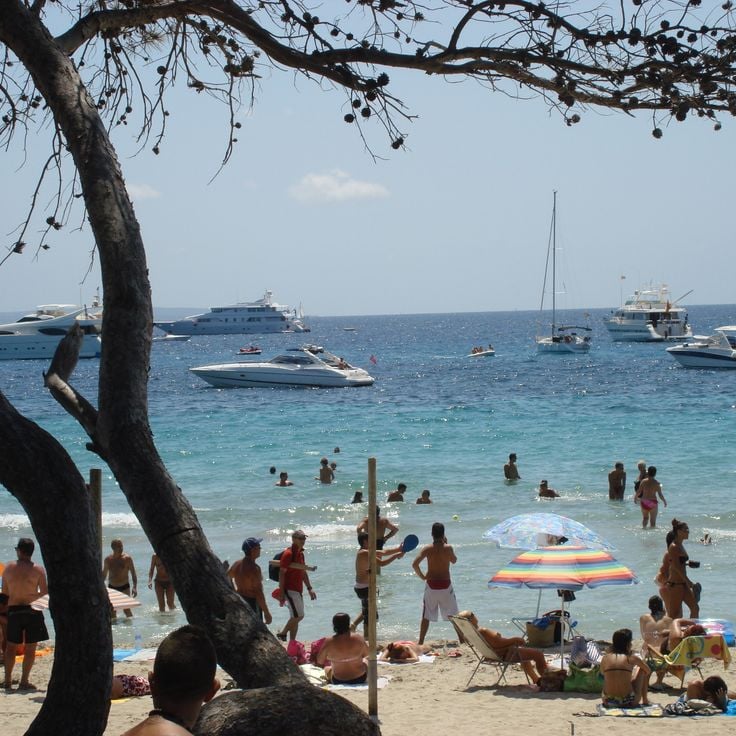
Ibiza, Spain
Playa de Ses SalinesThis coastline extends for 1.5 kilometers (nearly one mile) and features white sand along with nearby restaurants and salt flats. Playa de Ses Salines is located in the southern part of Ibiza and borders the Ses Salines Natural Reserve. The fine-sand beach is lined with dunes and Mediterranean vegetation. Salt production facilities in the surrounding area have shaped the landscape for centuries. The site combines swimming opportunities with historical salt works and natural coastal formations.

Asturias, Spain
Playa de LlangrePlaya de Llangre extends for 800 meters along the Cantabrian coast and features golden yellow sand. This beach sits between green cliffs and provides direct access to the Cantabrian Sea. The natural surroundings of coastal cliffs form a protected stretch of coastline in Asturias. The beach is suitable for swimming and walking along the Asturian Atlantic coast.
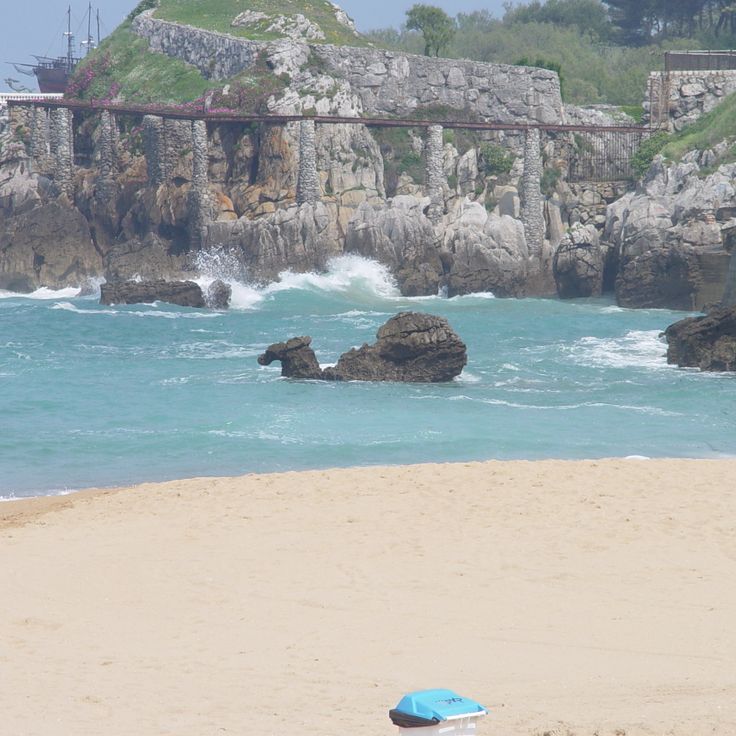
Santander, Spain
Playa del CamelloThis urban beach extends for 200 meters along the coast of Santander and features a natural rock formation that resembles the shape of a camel. The fine golden sand makes Playa del Camello a popular spot for locals and visitors. The rock formation that gives the beach its name stands in the sea near the shore and forms a distinctive feature of the bay. The beach sits in an urban area and offers direct access from the surrounding neighborhood.
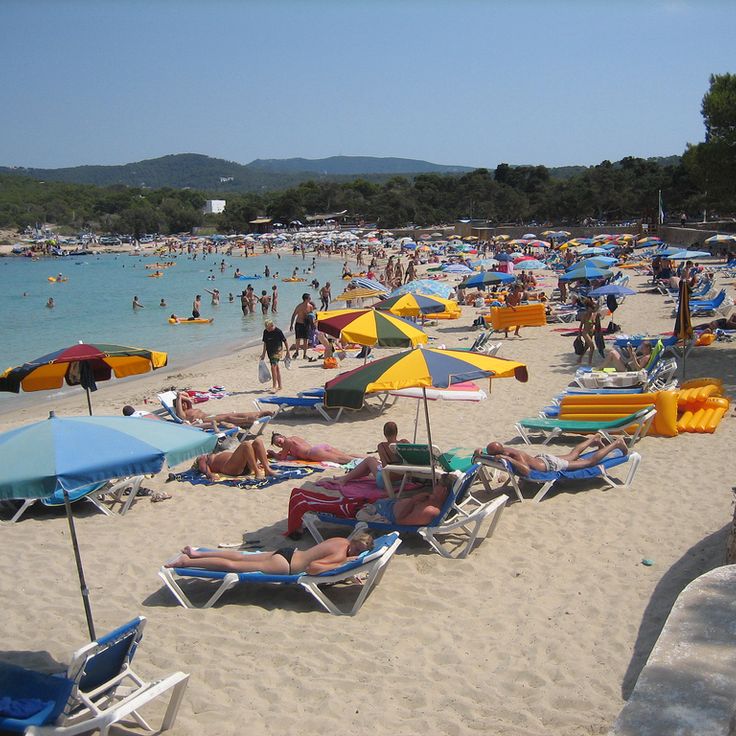
Ibiza, Spain
Cala BassaThis white sand cove on Ibiza is surrounded by juniper trees. The turquoise waters of Cala Bassa reach depths of up to 10 feet (3 meters) and provide good conditions for swimming and snorkeling. The beach has facilities for visitors and sees regular attendance during summer months. The natural setting with Mediterranean vegetation frames the shoreline.
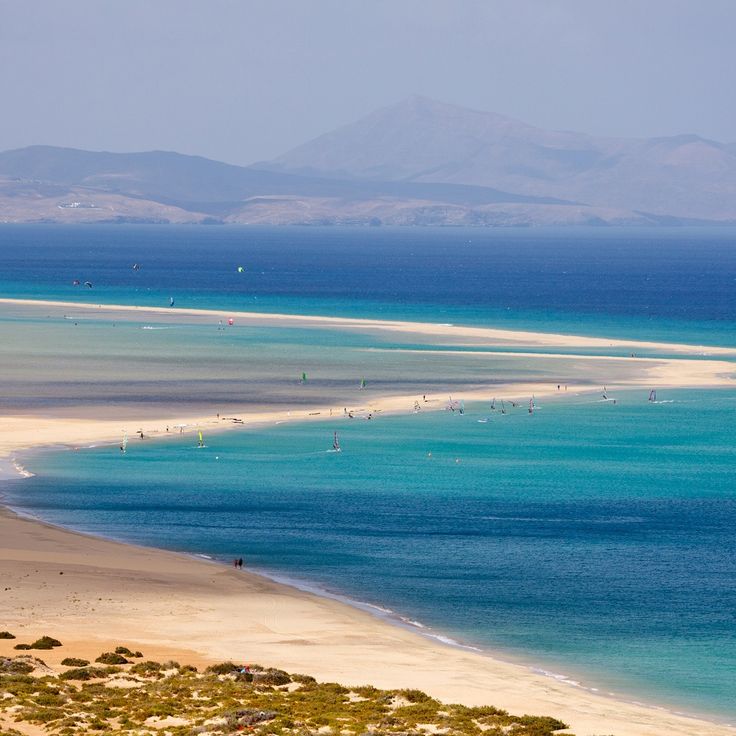
Fuerteventura, Spain
Playa de SotaventoPlaya de Sotavento stretches for nine miles (14 kilometers) of fine sand. At high tide, a lagoon forms between the beach and the sea, which is used for kitesurfing and other water sports. This coastline on the southeastern side of Fuerteventura offers expansive sandy areas and shallow water that extends for several hundred yards. The lagoon develops through the interaction of tides and sandbars, creating varying water depths. The beach sits on the windward side of the island and attracts both surfers and swimmers.
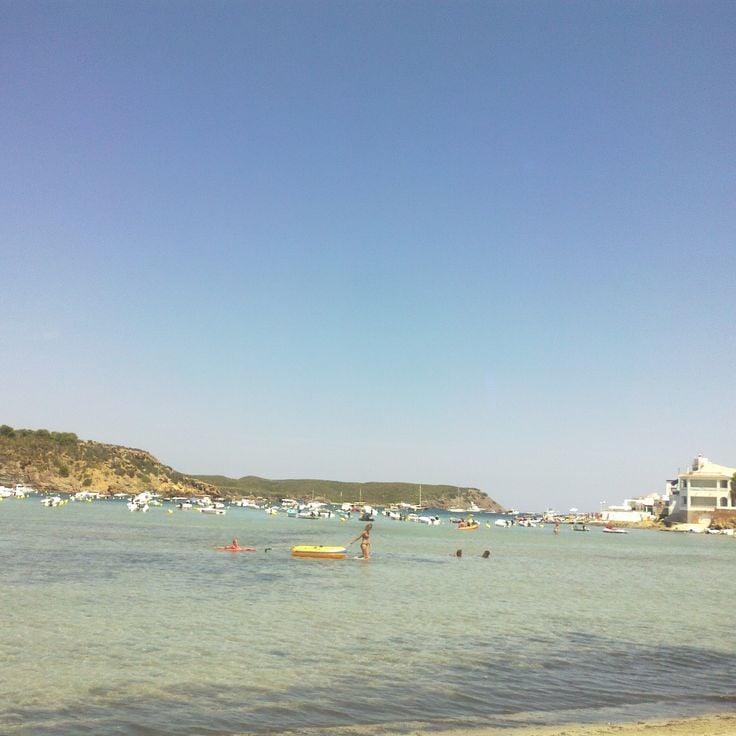
Menorca, Spain
Playa Es GrauEs Grau is a flat beach located in a sheltered bay on Menorca's northern coast. The water reaches a depth of only 3 feet (one meter) at a distance of about 2,000 feet (600 meters) from the shore. The bay sits within S'Albufera des Grau Natural Park and is bordered by dunes and pine trees. The sand is light in color and the water remains calm due to the bay's protected position.
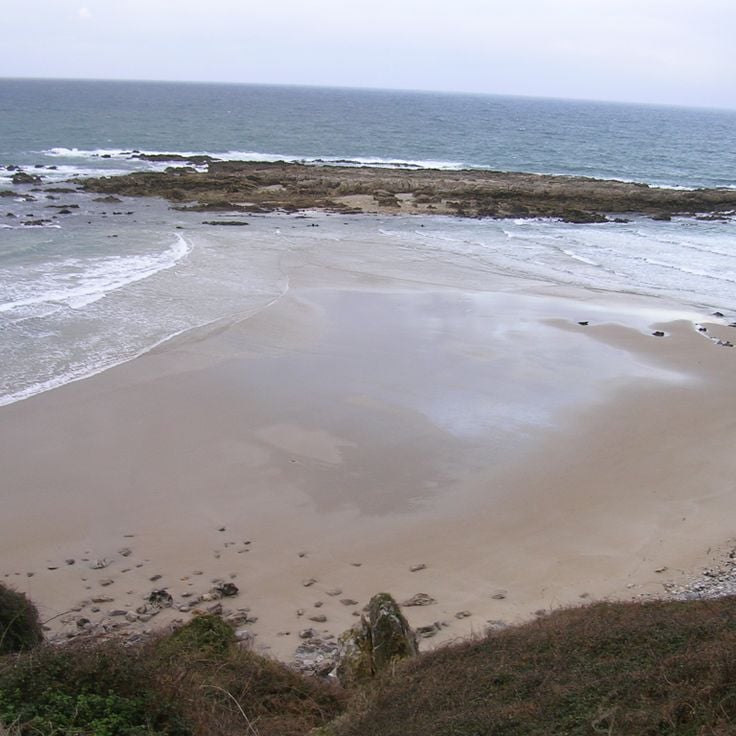
Cantabria, Spain
Playa de PechónPechón Beach stretches for 500 feet (152 meters) between cliffs and offers views of the Picos de Europa mountains in the background. This bay on the Cantabrian coast is framed by steep rock walls that give the beach a sheltered character. The Picos de Europa range forms a prominent backdrop behind the shoreline. Access is via a descent, and the location between the cliffs provides a natural boundary. The combination of coast and mountain landscape makes this stretch of beach a typical example of the northern Spanish Atlantic coast.
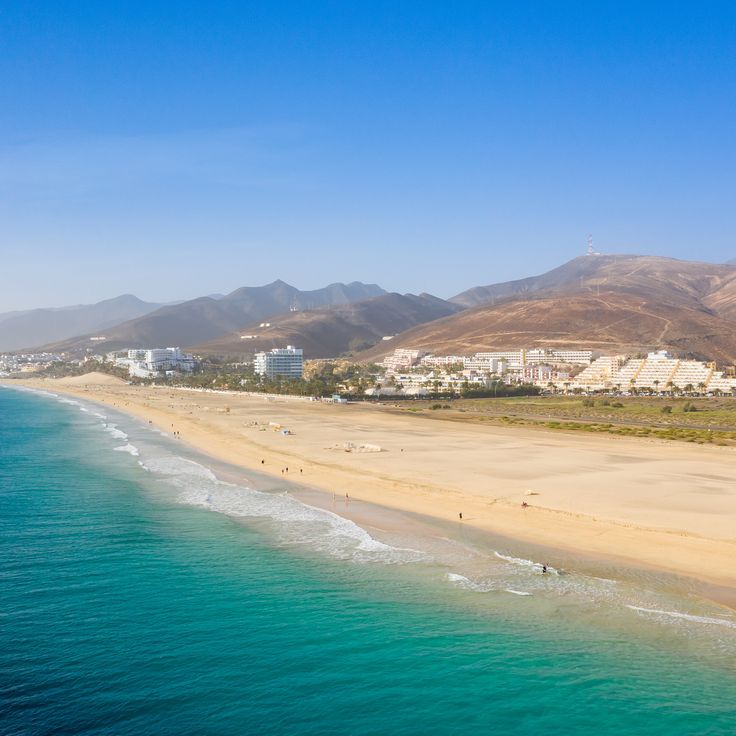
Fuerteventura, Spain
Playa del MatorralPlaya del Matorral is a 4-mile (6-kilometer) sand beach on the southern coast of Fuerteventura. The shore features a white lighthouse and wooden boardwalks that cross through the dune landscape. The beach borders the town of Morro Jable and is backed by sand dunes that extend along the coastline. The wooden pathways provide access to the beach while protecting the fragile dune ecosystem.
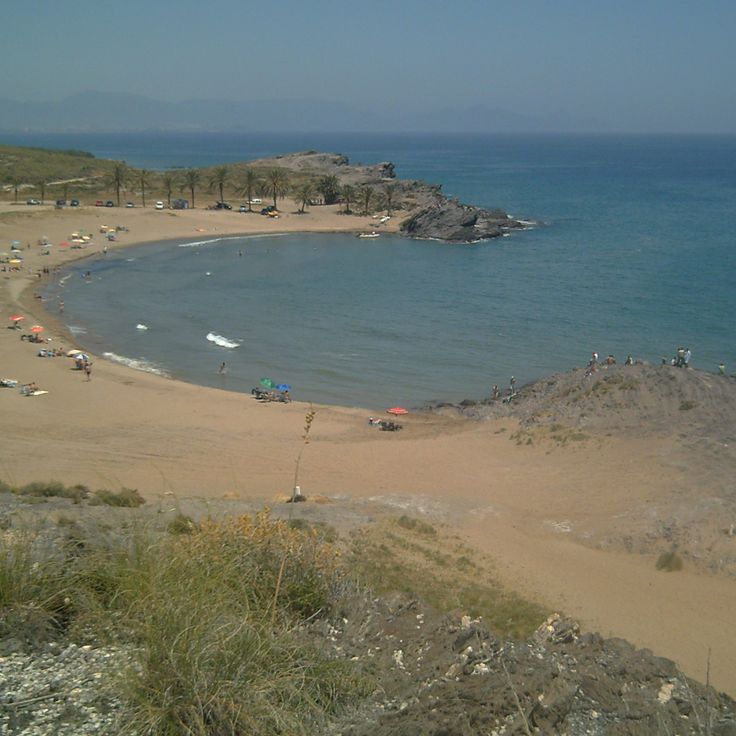
Murcia, Spain
Playa PerchelesPlaya Percheles stretches for 1,300 feet (400 meters) along the Costa Cálida and features fine sand and clean water. This stretch of coastline is characterized by natural vegetation that adds character to the surroundings. The beach combines the typical features of the Murcian coast with a quiet setting and forms part of the diverse beach landscape of southeastern Spain, where Mediterranean influences meet local conditions.
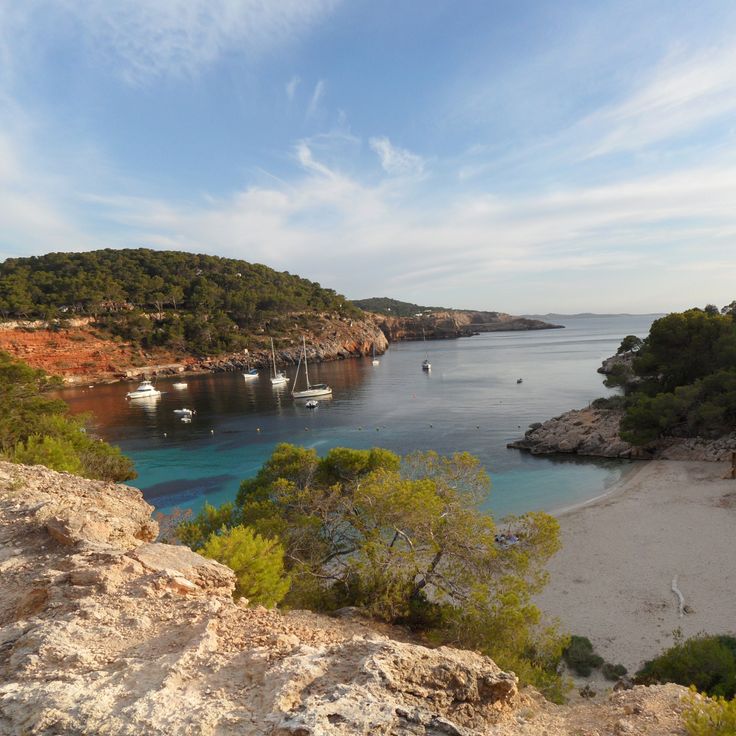
Ibiza, Spain
Cala SaladetaCala Saladeta is a small cove with reddish sand and a pine forest backdrop on Ibiza's western coast. This cove sits adjacent to the larger Cala Salada and provides access to clear Mediterranean waters. The beach is framed by natural rock formations and has limited facilities. The surrounding area features Mediterranean vegetation, and access is via a footpath from the neighboring cove.
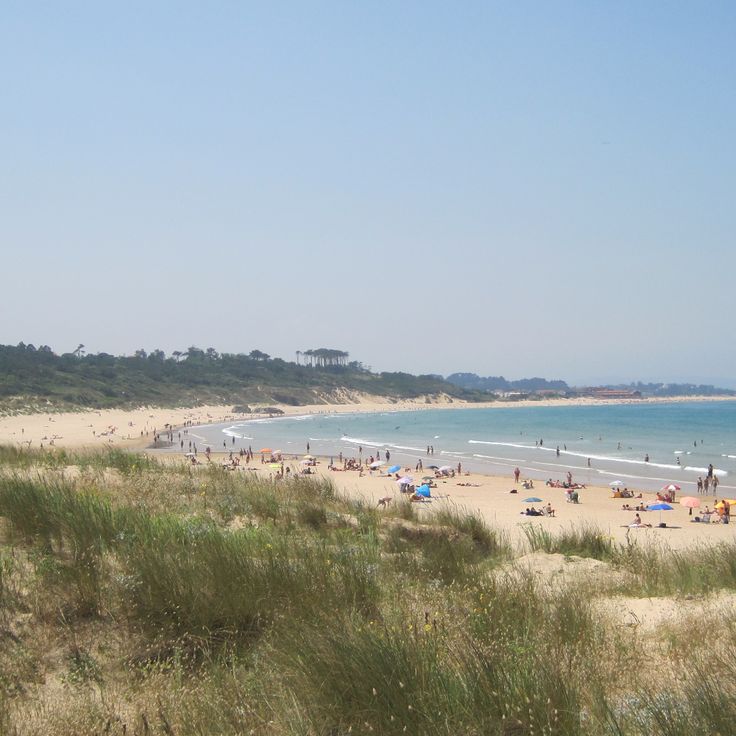
Cantabria, Spain
Playa de LoredoPlaya de Loredo stretches for 1.2 miles (2 kilometers) along the Cantabrian coast and offers consistent waves that attract surfers. The sandy beach sits on the northern coast of Spain with direct views of the Cantabrian Sea. The geographic position on the Atlantic coastline provides steady wave action throughout the year. The beach combines open sand areas with ocean access and serves as a base for surfing activities in the Cantabria region.

Mallorca, Spain
Es Caló des MoroThis small cove lies between limestone cliffs and requires a 15-minute walk down stone steps. Es Caló des Moro is located on the southeast coast of Mallorca and features turquoise waters and fine white sand. The cove is surrounded by Mediterranean vegetation. Access is through a path that winds through pine forests. The protected position between the cliffs provides calm water conditions.
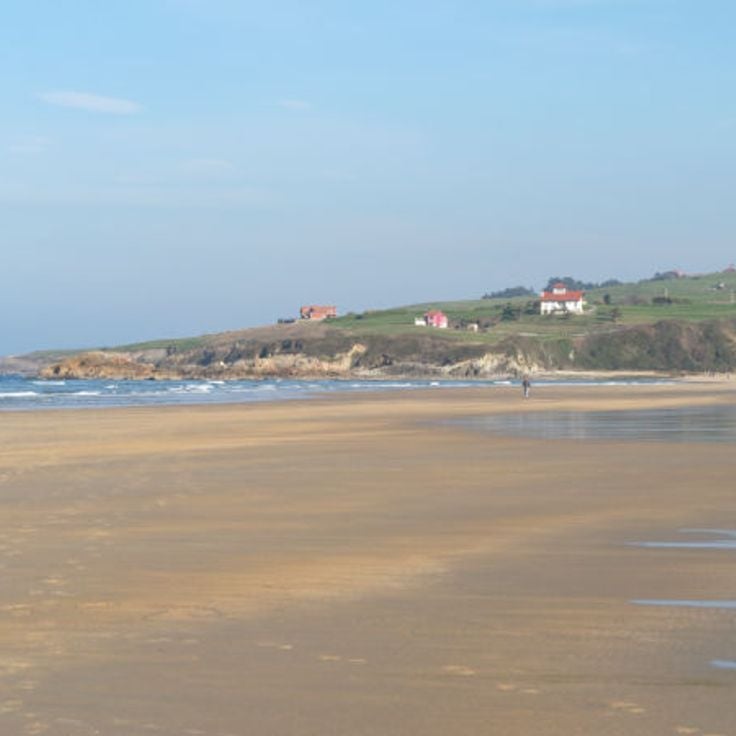
Cantabria, Spain
Playa de OyambrePlaya de Oyambre is a 1.2-mile sand beach within Oyambre Natural Park, surrounded by dunes and grasslands along the Cantabrian Atlantic coast. The beach sits in a protected area that preserves several coastal ecosystems and provides habitat for numerous bird species. The surroundings feature green landscapes extending to the sea, and the beach itself attracts surfers due to its waves. The natural dune vegetation and adjacent wetlands make this coastal section an example of the diversity found in northern Spanish coastal landscapes.
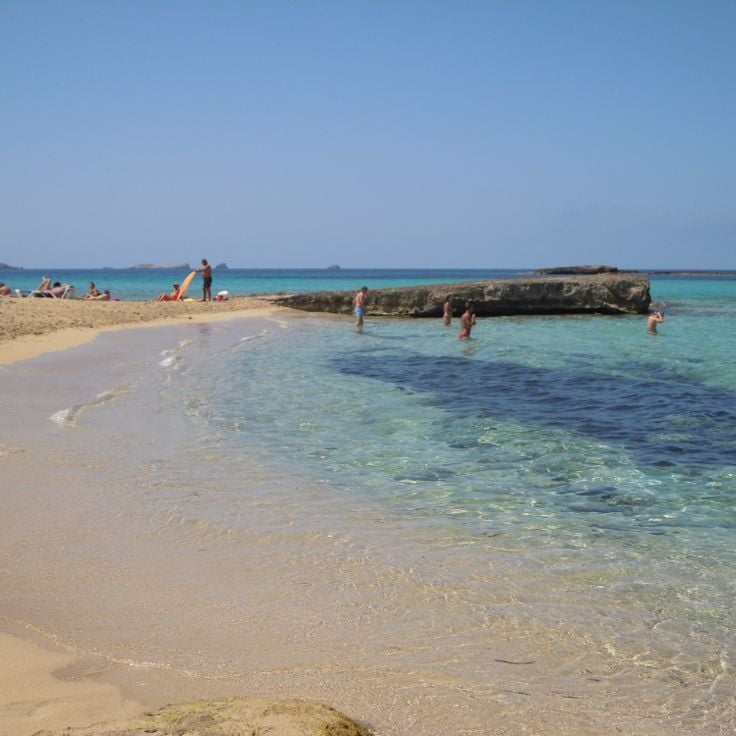
Ibiza, Spain
Cala ContaThe bay of Cala Conta contains several beaches with white sand and turquoise water. The location is known for its sunsets over the sea and offshore islands. The beaches sit on the western coast of Ibiza and offer views of the rocky islets S'Illot des Bosc and Es Illots de Ponent. The water is shallow and clear, suitable for swimming and snorkeling. Several beach bars and restaurants line the coast. The bay is accessible by road from the inland areas.

Mallorca, Spain
Torrent de Pareis beachTorrent de Pareis Beach sits at the end of a gorge on Mallorca, surrounded by 650-foot (200-meter) rock walls and pine forests. Access is through a demanding hiking trail that follows the gorge or by boat from the sea. The cove consists of pebbles and stones, with deep water. The beach is undeveloped, with no facilities or lifeguards. The gorge walls are among the tallest in the Serra de Tramuntana range and create a secluded setting. The beach is accessible only during summer months, as the gorge carries water in winter.
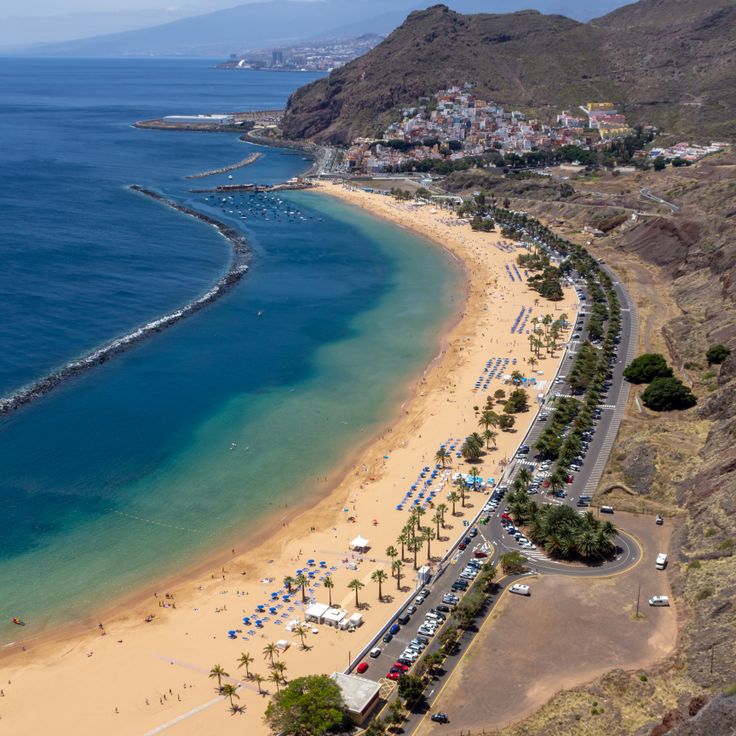
San Andrés, Tenerife, Spain
Las Teresitas BeachPlage de Las Teresitas stretches for 0.8 miles (1.3 kilometers) along the northern coast of Santa Cruz de Tenerife and features golden sand imported from the Sahara Desert. This artificially created beach is located in the San Andrés district and offers calm waters protected by breakwaters. Palm trees line the promenade while mountains form the backdrop of this coastal location, which serves as a swimming area for residents and visitors.

Tossa de Mar, Spain
Platja GranPlatja Gran stretches along the center of Tossa de Mar, positioned directly beside the 12th-century medieval fortress of Vila Vella. This sand beach offers a combination of historic backdrop and coastal access. The proximity to the old town provides access to local facilities, while the fortress walls create a historic reference point. The beach serves as the central coastal section of the town, connecting the bathing experience with the surrounding architecture.
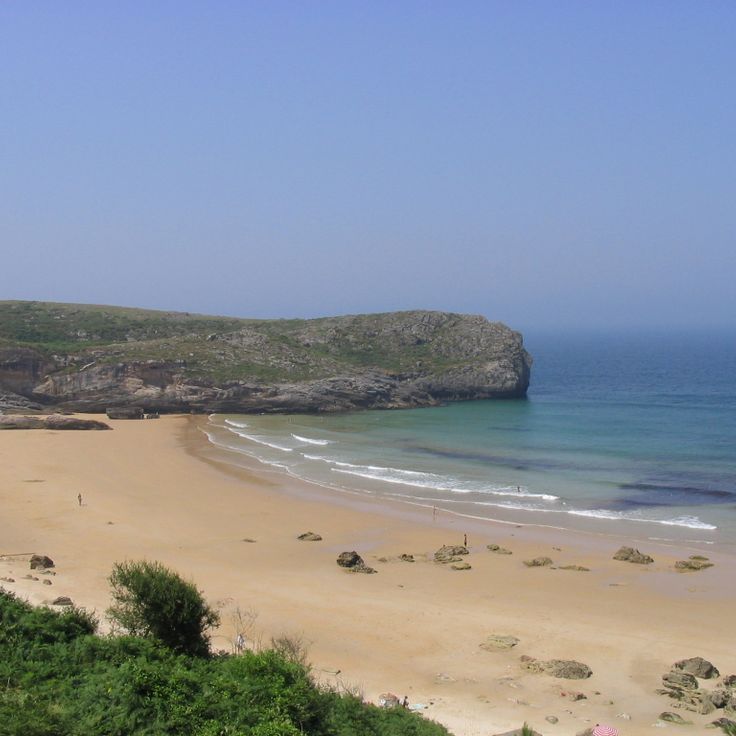
Cudillero, Spain
Ballota BeachPlaya de Ballota is a natural beach on the Asturian coast that combines pebbles and sand along its shoreline. The beach sits between rugged cliffs and green pasturelands, extending approximately 260 feet (80 meters) in length. Tidal influences from the Cantabrian Sea shape the coastal landscape, which includes steep rock formations and natural cave openings. Access is via a footpath through adjacent pastures. The surrounding area remains largely undeveloped, with limited facilities and seasonal lifeguard services during summer months.
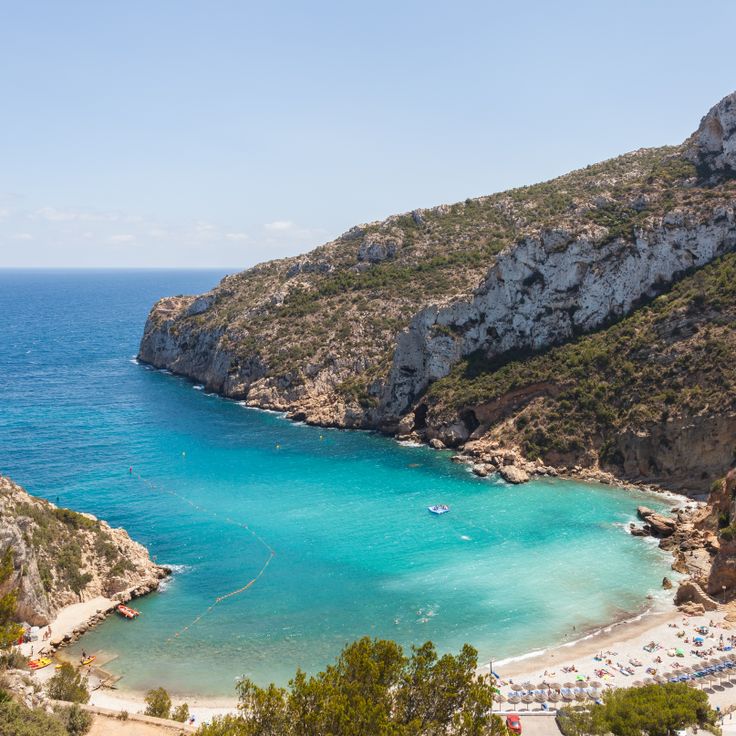
Jávea, Spain
Granadella BeachPlage de la Granadella is a small cove with a pebble beach located within a protected marine area, surrounded by pine forests and limestone cliffs. The clear waters and natural setting make this beach a popular destination for snorkeling and swimming. The cove sits along the coast of Jávea and features Mediterranean vegetation throughout. Trails along the cliffs provide access to this coastal landscape on the Costa Blanca.
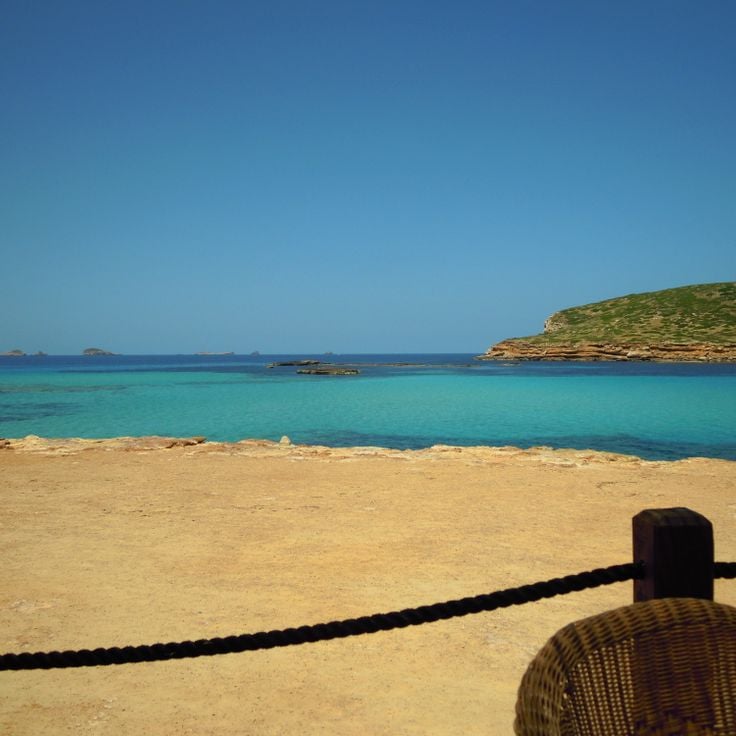
Ibiza, Spain
Cala ComteCala Comte is located on the western coast of Ibiza and consists of several small coves with white sand and clear water. The shoreline is bordered by low rocks and Mediterranean vegetation. The area offers views of the offshore islands Es Bosc and S'Espartar. The beach extends for approximately 490 feet (150 meters) and is divided into different sections by natural rock formations. The water depth increases gradually, and the sandy seabed is visible in the shallower areas. This coastal zone is used by visitors and locals for swimming and sunbathing and can be reached both on foot and by vehicle.
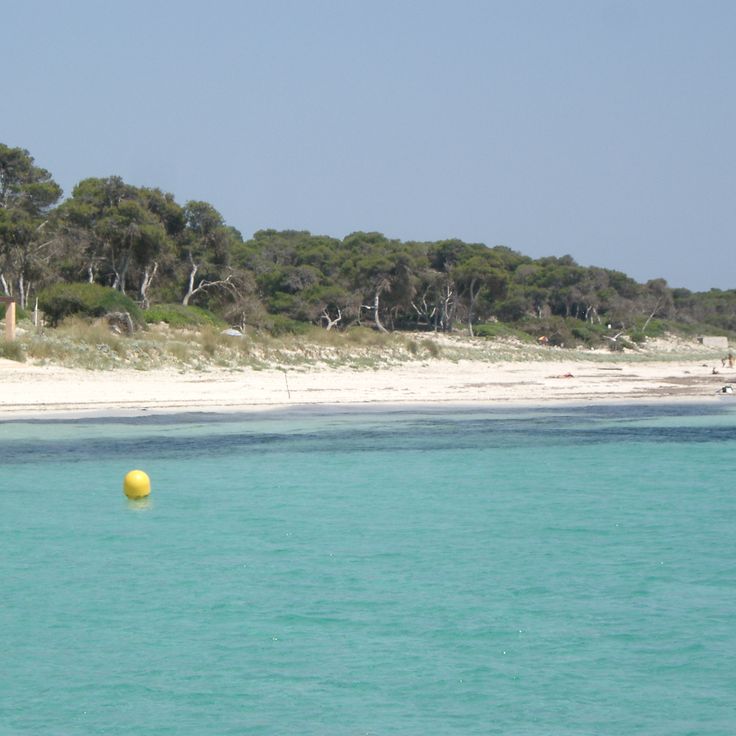
Majorca, Spain
Es CarbóEs Carbó is a natural beach on Majorca featuring fine sand and shallow waters. A pine forest extends in the background, providing shade. The beach is accessible via a coastal trail that winds through Mediterranean vegetation. The clear waters make this location suitable for swimming, while the natural surroundings remain largely undisturbed. The cove is situated away from tourist centers and preserves its natural characteristics.